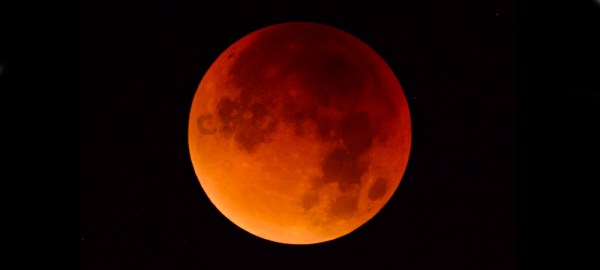According to ancient astronaut theorists, the lunar eclipse this weekend had an unexpected visitor. Right around the time of totality, a meteoroid crashed into the moon, and it was visible from Earth.
Meteoroids crash into the Earth and Moon all the time, although this usually happens either over the ocean (70% of the Earth) where we can’t see it, on the far side of the moon (~50% of the Moon) where we can’t see it, or on the sunlit side of the Moon (another, different 50%), where we can’t see it. These meteoroids range from the size of a grain of sand to several meters across, but only the largest could ever be seen by the human eye. This weekend’s lunar eclipse, the Super Blood Wolf Moon was visible to a large portion of the population, and many, many cameras were trained on the Moon. Several telescopes livestreamed the entire eclipse, and multiple people caught a glimpse of a small flash of light, seeming to come from around Lagrange crater. Because this event was seen by multiple observers separated by thousands of miles, the only conclusion is that something hit the moon, and its impact event was recorded on video.
This is not the first time an impact event has been recorded on the moon. The Moon Impacts Detection and Analysis System (MIDAS) running out of La Hita Observatory has regularly recorded impact events, including one that was comparable to an an explosion of 15 tons of TNT. These automated observatories aren’t running during a full moon, like during a lunar eclipse, because no camera would be able to pick up the flash of light. We were somewhat lucky last weekend’s impact happened during totality, and with dozens of cameras trained on the Moon.
Further investigation will be necessary to determine the size of the meteoroid and obtain pictures of its impact crater, but for a basis of comparison, the LCROSS mission plowed a Centaur upper stage (2.2 tons) into the lunar surface at 2.5 km/s. This should have resulted in a flash visible through binoculars, but it didn’t. The meteoroid that struck the moon last weekend would have been traveling faster (a minimum of about 12 km/s), but the best guess is that this rock might have been of suitable size to have fit in the back of a pickup truck, or thereabouts.












